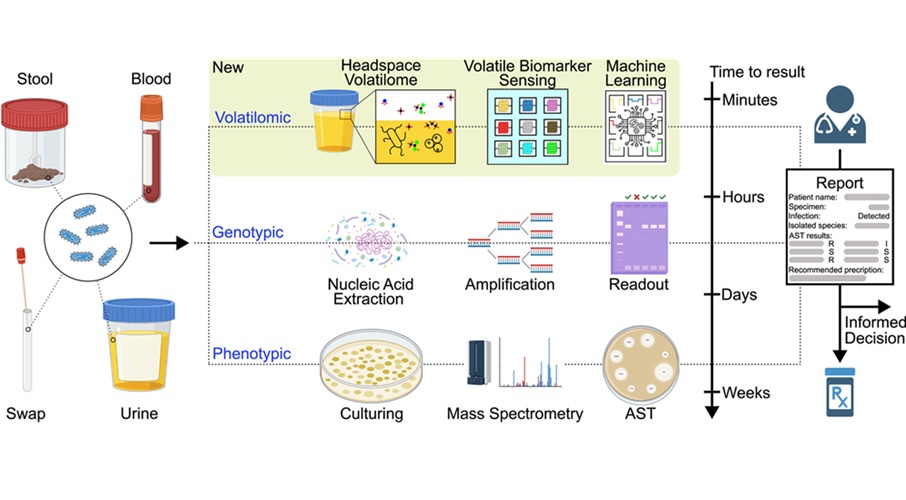ML-Powered Gas Sensors to Detect Pathogens and AMR at POC
Posted on 24 Jul 2025
Fast and accurate diagnosis is critical to improving patient care and combating the global threat of antimicrobial resistance (AMR). Traditional diagnostic methods for infections, such as gas chromatography-mass spectrometry and proton transfer reaction–mass spectrometry, while effective, are expensive, technically demanding, and unsuitable for point-of-care settings. Interpreting volatile organic compounds (VOCs)—the unique chemical signatures emitted by microbes and infected tissues—can be challenging due to their complexity and overlap. Moreover, these VOC signals are often influenced by environmental variables, which adds to diagnostic inaccuracy. A report published in Cell Biomaterials explores the use of sensor systems combined with advanced computational models to detect and classify microbial VOCs with high precision.
This report by researchers at ETH Zurich (Zurich, Switzerland) presents a promising approach that combines gas sensors and machine learning for real-time infection diagnosis. The report explores how gas sensors made from nanostructured metal oxides, conductive polymers, and hybrid composites could offer a compact, affordable, and practical solution for detecting VOCs. These sensors measure changes in electrical resistance or conductance when exposed to microbial byproducts. To decode the complex patterns produced by VOCs, the researchers assessed the viability of integrating machine learning algorithms such as support vector machines (SVM), random forests, long short-term memory (LSTM) neural networks, and gradient boosting to classify sensor data and improve diagnostic accuracy. The models were assessed across bacterial cultures, infected tissues, and clinical biofluids such as urine and blood, demonstrating its ability to distinguish bacterial species and differentiate between drug-resistant and susceptible strains.

The team compiled findings from recent studies that tested these sensor-ML systems on bacterial cultures, infected tissue samples, and clinical biofluids such as urine and blood. The systems achieved high sensitivity and specificity, accurately identifying pathogens like Escherichia coli and Staphylococcus aureus, as well as detecting resistance profiles such as those involving extended-spectrum beta-lactamases. The researchers have emphasized the need for training these machine learning models on comprehensive datasets that reflect clinical variability to ensure robust performance. Ongoing efforts include miniaturizing devices for point-of-care use, functionalizing sensor surfaces, and mitigating environmental interference such as humidity and temperature. Although further development and clinical validation are necessary, these systems offer a clear path toward noninvasive, rapid diagnostics that can complement laboratory methods and support better antimicrobial stewardship.













